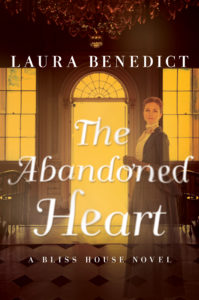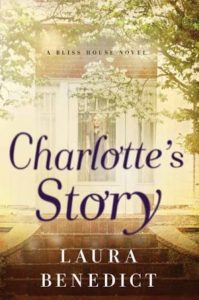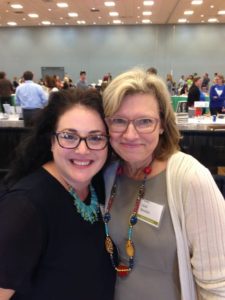Jordan Dane
@JordanDane

Before Laura Benedict joined TKZ as a new member recently, I had lined her up for a guest spot when her new book would be launched. I hope you’ll indulge us in allowing me to keep my promise in featuring Laura and her work. Take it away, Laura.
***
When I decided that I wanted to write a series of suspense novels, I didn’t do what many writers do: plunge a character into earth-shattering change, see how they respond, rebuild their world, have a successful conclusion to the story (meaning they survive), and move on to the next book. No, I wrote a different sort of series.
My vision of the Bliss House novels came to me all at once: five novels set in the life of a grand house that was built in Virginia in 1878 by a Long Island carpetbagger named Randolph Bliss. I knew Randolph Bliss to be an evil sumbitch, but he couldn’t be my series protagonist because of the extended time period, 1876-2014,—though since the supernatural is involved, I guess he technically could have been the protagonist. But the stories that came to me weren’t primarily about Randolph, or any other human. Their common actor, the character that drives the stories, stirs up and engages in conflict, and even changes over the years, is Bliss House itself.
I wrote three Bliss House novels: Bliss House was published in 2014, Charlotte’s Story in 2015, and The Abandoned Heart comes out next week, on October 11th.
Rather than start the saga of Bliss House with the house’s initial construction, I wrote the last book, first. Bliss House is a contemporary novel, set around 2014. By starting at the end, I was able to jumpstart the series with a story in which my protagonist was at its most powerful. (To be clear, though, the series is actually more of a collection of novels than a series. They all work as standalones.)
Oh, did I mention that Bliss House is haunted?
I had long wanted to write a haunted house novel. My favorite gothics—Jane Eyre and Rebecca—are set in houses that heavily influence the novels’ action. And then there are the novels with actively haunted houses: The Haunting of Hill House, The Shining, Hell House, The Turn of the Screw. The Haunting of Hill House, and The Turn of the Screw appeal to me because it’s possible to imagine that their hauntings are psychological, rather than organic. One of the premises of the Bliss House novels is that a house can be imprinted with the personalities and acts of its inhabitants. Thus, by 2014, Bliss House is replete with acts of both evil and goodness. But imprinting can work both ways: a story’s characters can be heavily influenced and even changed—physically and emotionally—by a house’s personality.
Think about your own experience with houses or even other types of buildings. There are buildings that make us feel good, and energized. And then there are the places that seem to sap our energy—a house, a school, a garage, a basement—places where we’ve experienced trauma, or that signal that something is just not right. Sometimes it has to do with unsettling angles and corners. Architecture can be claustrophobic or unfriendly. Every building has a distinct personality.
Years ago I saw a film called The Enchanted Cottage and was mesmerized by its plot: a disfigured WWII pilot played by Robert Young marries a homely young woman played by Dorothy McGuire. They settle in a charming honeymoon cottage in the English countryside, and soon after their marriage, they begin to see each other differently. Whole and attractive. They’re certain that the cottage has worked some magic on them, and they’re eager to surprise their loved ones with the happy results. Of course, it’s revealed to them that they have not physically changed, but now simply see each other through the eyes of love. It’s an unabashedly romantic story, originally written as a play produced just after WWI. I am no eager fan of romantic stories, but I am fond of fairy tales with hints of darkness. Perhaps I’m the only one who saw the possibilities of darkness in this story, of the house that might have manipulated these two people for its own reasons. Was it to trick them? To expose their deepest fears and wishes?
But back to the writing backwards thing. I knew from the moment I wrote the first lines in Chapter One of Bliss House that whatever was manipulating the house’s inhabitants was threaded through the very ground on which it was built:
“The blindfold kept Allison from seeing, but the chilly air around her smelled sweet and damp. There were flowers nearby—roses, she guessed—and the drip drip drip of water. They might be underground, even in a cave.
How thrilling!”
I knew Randolph Bliss and his two (consecutive) wives were at the heart of the story that began nearly a century and a half earlier. There are elements in Bliss House whose significance isn’t seen until they’re introduced in The Abandoned Heart. And there are many things in The Abandoned Heart that I couldn’t see clearly until I had written Charlotte’s Story, which takes place in the 1950s.
I remember thinking that it might be somewhat easier to write the Bliss House novels starting with the last one, rather than starting in 1878. It was not. When a book is written and published, the story is pretty much set in stone. Family lineage of the characters is already chosen and established, including numbers of siblings, and physical traits. The geography is set. The house’s reputation as a dangerous place has to be carefully constructed in order to make it reflect the first (last) book.
The one constant had to be the house, even though its appearance and bearing changes with each book. When Rainey Bliss Adams buys it in 2014, it’s in considerable disrepair because its incarnation as an inn that was the site of a brutal murder meant it was vacant for several years. Rainey makes it the showplace it was when it was first built. In the mid 1950s, in Charlotte’s Story, Bliss House bears the gothic heaviness of a house that’s seen three generations of devastating secrets. But Bliss House truly shines in The Abandoned Heart. It smells of new wood, and new gardens. It’s filled with paintings and exquisite rugs and European furniture. It is surrounded by newly-planted orchards and centuries-old woodlands. Most of its secrets are unborn, and the ones extant are fresh, and perhaps not yet dangerous.
If you read the Bliss House books, feel free to start with the last. Or the first. Or even the middle one. I don’t mind.
To move back in time the way I did seems a little crazy to me now. But the only way to be true to a story is to tell it the way it presents itself. Sometimes stories aren’t logical or easy. Here, backwards isn’t a gimmick. It’s just the way the story happened. I was lucky this time around to have a publisher who didn’t mind my doing something a bit unconventional.
I haven’t decided if The Abandoned Heart is the last you’ll hear of Bliss House. A hundred-plus year-old house has a lot of stories living inside it, and clamoring to be told. Ghosts are…noisy.
FOR DISCUSSION:
1.) Have you ever tried writing a series backwards? Or did you find new inspiration for a series by discovering a great backstory to write about?
2.) Do you believe in ghosts? Have you ever had experiences with the dead?
The Abandoned Heart is available for pre-order HERE, and will be in stores on Tuesday, October 11th. Laura will be touring throughout October and early November in Missouri, Southern Illinois, Kentucky, Ohio, and Virginia. Check her list of appearances HERE.
Charlotte’s Story, the second Bliss House Novel is out now.


Website: http://www.laurabenedict.com/
Instagram https://www.instagram.com/laura_benedict/
Twitter: https://twitter.com/laurabenedict
Facebook: https://www.facebook.com/AuthorLauraBenedict/





